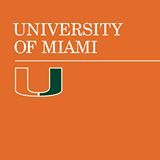预约演示
更新于:2025-05-07
Aniracetam
茴拉西坦
更新于:2025-05-07
概要
基本信息
原研机构 |
在研机构 |
非在研机构- |
权益机构- |
最高研发阶段批准上市 |
首次获批日期- |
最高研发阶段(中国)批准上市 |
特殊审评- |
登录后查看时间轴
结构/序列
分子式C12H13NO3 |
InChIKeyZXNRTKGTQJPIJK-UHFFFAOYSA-N |
CAS号72432-10-1 |
关联
7
项与 茴拉西坦 相关的临床试验ISRCTN95901685
Repurposing positive allosteric modulators of glutamate receptors to prevent hypoglycemia in type 1 diabetes: a pilot clinical study
开始日期2025-07-01 |
NCT05958017
ReSET for the Treatment of Stimulant Use in HIV Clinics: Care Optimization Supporting Treatment Adherence (COSTA)
The purpose of this study is to find out if reSET, an FDA authorized mobile therapeutic, is effective in treating stimulant use disorder and helping keep HIV viral load suppression stable among men who have sex with men who are living with HIV and have a stimulant use disorder.
开始日期2025-01-21 |
申办/合作机构  University of Miami University of Miami [+1] |
NCT05862519
A Single-Group, Open-Label Clinical Study to Evaluate the Efficacy of Four Supplements on Improving Readiness for Intimacy
This study is to evaluate the efficacy of four supplements designed to help participants get ready for sexual intimacy through improving digestion, weight management, sexual drive and stamina, and physical endurance during workouts and overall mood and quality of life. This study will be conducted as a single group, virtual trial, in which all participants will take all four supplements and complete online questionnaires. Participants will take the indicated supplements for the indicated amounts of time over 12 weeks. Questionnaires will be completed at baseline, and then at indicated times throughout the trial.
开始日期2023-03-14 |
申办/合作机构- |
100 项与 茴拉西坦 相关的临床结果
登录后查看更多信息
100 项与 茴拉西坦 相关的转化医学
登录后查看更多信息
100 项与 茴拉西坦 相关的专利(医药)
登录后查看更多信息
513
项与 茴拉西坦 相关的文献(医药)2025-05-01·Journal of Industrial and Engineering Chemistry
ZnO/Organic superlattice with phase composite structure for enhanced thermoelectric performance at low temperature
作者: Palani, Indirajith ; Kim, Chaerim ; Sung, Myung Mo ; Mo Sung, Myung ; Ji, Hyeonseok ; Park, Jaeyoung ; Giang Pham, Hoang ; Pham, Hoang Giang ; Cho, Sangho
2025-04-02·Journal of the American Chemical Society
Late-Stage Photoredox-Catalyzed Aryl C–H Bond Diazomethylation with Atomic Carbon Reagents
Article
作者: de la Vega-Hernández, Karen ; Suero, Marcos G. ; Diéguez-Vázquez, Alejandro ; Cañellas, Santiago ; Nannini, Leonardo J. ; Puggioli, Alessio ; Rey-Blanco, Anxo ; Herraiz, Ana G. ; Jiang, Liyin
2025-03-14·Otolaryngologia Polska
The Ready for Safe Cancer Treatment (RESET) tool: enhancing quality and optimizing timely and safe discharge with transitional care adjustments for Head and Neck Cancer patients
Article
作者: Kiszka, Mariusz ; Jeziorny, Mateusz ; Jędruchniewicz, Natalia ; Wierzbicka, Małgorzata ; Dwornikowska-Dąbrowska, Mariola ; Barnaś, Szczepan ; Zając, Bernard
34
项与 茴拉西坦 相关的新闻(医药)2024-03-18
近日,美国的数字疗法企业Better Therapeutics宣布将缩减业务、裁员,并为公司剩余资产寻找买家。公司目前处于退市的边缘,但是上周公司董事会没有选择推出重新遵守股市交易规则的计划,而是要求其退市。此消息放出后,公司的股票当天暴跌80%。数字疗法于2010年在美国有了雏形,通过软件程序来向患者提供基于治疗措施或干预措施。据《2022年全球数字疗法产业报告》,2020年全球数字疗法市场规模已达35亿美元。Better成立于2015年,公司使用经临床验证的、FDA监管的软件来改变导致心脏代谢疾病的行为,以改善生活治疗,较少持续的药物需求,并降低成本。2021年,Better借助“数字疗法第一股”Pear Therapeutics上市的东风上市。但是成于此,败也此。2023年4月,Pear Therapeutics申请破产并关闭运营,Bette也将很快步其后尘。2021年12月,Pear以110亿人民币的价格登陆纳斯达克,被业内誉为“数字疗法第一股”。但是上市一年后,百一估值就化为泡影。在申请破产保护之前,Pear共有三款数字疗法产品获批上市,分别针对药物使用障碍(ReSET)、阿片类药物使用障碍(ReSET-O)和慢性失眠(Somryst)。2017年,Pear推出的首款数字疗法产品ReSET通过FDA审批,成为官方认证的“世界上第一款数字疗法”。但是上市后,就开始走下坡路。2022年度,Pear营业亏损为1.234亿美元,收入仅为1270万美元。股价也从9美元左右跌至不足2美元。截止申请破产前,Pear的股价从9美元跌至0.22美元,市值蒸发一百多亿。与Pear相比,Better的情况更加艰难,目前还没有上市的产品。Better目前的产品线包括4款产品——针对治疗2型糖尿病的BT-001、针对高血压的BT-002、针对高脂血症的BT-003和针对非酒精性脂肪肝的BT-004。目前只有BT-001管线处于关键性临床阶段,BT-002和BT-003仍在试点研究阶段,BT-004处于发现阶段。2023年7月,公司的AspyreRx项目获得FDA新的临床许可,为高血糖患者提供数字疗法,同时一项临床研究表明,该项目改善了患者的血压、体重和生活质量。此外,今年2月份,Better的另一项针对晚期肝病的数字疗法获得了FDA的突破性疗法认证。但是随着行业龙头Pear的前车之鉴,Better似乎也开始不被看好,关门卖身可能是迫不得已的选择。参考来源:1.https://www.fiercebiotech.com/medtech/digital-diabetes-app-maker-better-therapeutics-shutters-operations-lays-staff2.https://www.bettertx.com/pipeline/本周好文推荐如需转载请联系佰傲谷并在醒目位置注明出处·····
财报突破性疗法加速审批高管变更
2023-04-13
在宣布将开始寻找战略替代方案不到一个月后,数字疗法先驱Pear Therapeutics决定走项破产之路。根据该公司最近向美国证券交易委员会提交的文件中披露,包括首席执行官Corey McCann在内的几乎所有员工(总共170人,占92%)都将被解雇,剩下的15名员工在法院的监督下,负责进行公司资产的出售交易。Pear于2013年成立,是一家基于软件的数字疗法平台提供商,致力于处方数字疗法(PDT)的研发工作。Pear已经向市场成功推出了三种处方数字疗法。2017年,Pear推出的首款数字疗法ReSET通过FDA审批,成为官方认证的“世界上第一款数字疗法”。2018年,Pear推出其第二款数字疗法reSET-O,用于治疗阿片类药物使用障碍症。2020年推出用于治疗慢性失眠的数字疗法Somryst。此外,Pear旗下还有14个在研产品,覆盖精神病学、神经病学、胃肠、肿瘤学和心血管等多个领域。因为在数字疗法领域的领先地位,Pear成立之后备受资本青睐,先后完成8轮融资,获得了包括软银、淡马锡等知名风投机构的支持,2021年12月,Pear通过SPAC形式登陆纳斯达克,被业内誉为“数字疗法第一股”。而在闯过了艰难的监管关卡后,处方数字疗法面临的最大挑战则是商业规模化。一方面,数字疗法很像药品,有着较为严格的临床要求,需要有类似药品的功效才能获得市场的认可。但另一方面,处方类数字疗法的有效性受到医生投入的精力、病人的依从性和医疗制度本身的完善性等诸多因素的影响,任一环节的缺失,都会使得整个产品的疗效很难体现,最终无法说服用户继续使用。Corey McCann也表示很难让客户(保险公司)为其产品买单是导致Pear破产的关键原因。Pear在一份证监会的文件中提到,目前美国医疗保险并未把处方数字疗法涵盖在内。2022年,Pear的数字疗法产品开出了4.5万张处方,但只有约一半付费,而且公司仅能收取其中41%的费用。2022年度,Pear营业亏损1.234亿美元,收入仅为1270万美元。为了控制成本,去年Pear进行了两轮裁员,分别裁掉了25人和59人,以期节约超过1000万美元的成本。不过,两番裁员也没能让Pear摆脱困境,在2022年生物科技资本寒冬之下,数字疗法的艰难推广让公司也无力支撑下去,Pear的现金流已经宣告枯竭,截至2022年底,Pear的现金和现金等价物总计4830万美元。今年3月17日,Pear寻求战略性解决方案(strategic alternatives),包括潜在的合并、出售、资产剥离或者额外融资。而在申请破产保护前,Pear委托的的投资银行MTS Health Partners已经接触了140多家潜在买家,其中24家公司准备签署保密协议。不过,在评估所有选项后,Pear最终还是选择申请了破产保护。参考出处:https://www.sec.gov/ix?doc=/Archives/edgar/data/1835567/000183556723000018/pear-20221231.htmhttps://xueqiu.com/S/PEAR/247063450https://xueqiu.com/4171822787/244884657https://endpts.com/digital-therapeutics-maker-pear-files-for-bankruptcy-lays-off-170-staffers-including-ceo/
抗体药物偶联物财报生物类似药
2023-02-27
BOSTON--(BUSINESS WIRE)-- Pear Therapeutics, Inc. (Nasdaq: PEAR), the leader in developing and commercializing software-based medicines called prescription digital therapeutics (PDTs), today announced the Company will participate in the 43rd Annual Cowen Healthcare Conference being held March 6-8, 2023 in Boston. Corey McCann, M.D., Ph.D., President and CEO, will represent the Company in an analyst-led fireside chat on Monday, March 6 at 9:10 a.m. Eastern Time.
A live audio webcast can be accessed by clicking here and will be made available in the Investors section of Pear’s website at . A replay of the webcast will be available on Pear’s website for up to 30 days following the live presentation.
About Pear Therapeutics
Pear Therapeutics, Inc., which is traded on Nasdaq as PEAR, is the parent company of Pear Therapeutics (US), Inc. Pear is the leader in developing and commercializing software-based medicines, called prescription digital therapeutics (PDTs). Pear aims to redefine care through the widespread use of clinically validated software-based therapeutics to provide better outcomes for patients, smarter engagement and tracking tools for clinicians, and cost-effective solutions for payers. Pear has the first end-to-end platform to discover, develop, and deliver PDTs to patients and a pipeline of products and product candidates across therapeutic areas, including the first three PDTs with disease treatment claims from the FDA. Pear’s product, reSET®, for the treatment of substance use disorder, was the first PDT to receive marketing authorization from the FDA to treat disease. Pear’s second product, reSET-O®, for the treatment of opioid use disorder, was the first PDT to receive Breakthrough Designation. Pear’s third product, Somryst® for the treatment of chronic insomnia, was the first PDT submitted through FDA’s traditional 510(k) pathway while simultaneously reviewed through FDA’s Software Precertification Pilot Program. For more information, visit Pear at .
突破性疗法
100 项与 茴拉西坦 相关的药物交易
登录后查看更多信息
研发状态
10 条最早获批的记录, 后查看更多信息
登录
| 适应症 | 国家/地区 | 公司 | 日期 |
|---|---|---|---|
| 记忆障碍 | 中国 | - |
登录后查看更多信息
临床结果
临床结果
适应症
分期
评价
查看全部结果
| 研究 | 分期 | 人群特征 | 评价人数 | 分组 | 结果 | 评价 | 发布日期 |
|---|
No Data | |||||||
登录后查看更多信息
转化医学
使用我们的转化医学数据加速您的研究。
登录
或

药物交易
使用我们的药物交易数据加速您的研究。
登录
或

核心专利
使用我们的核心专利数据促进您的研究。
登录
或

临床分析
紧跟全球注册中心的最新临床试验。
登录
或

批准
利用最新的监管批准信息加速您的研究。
登录
或

特殊审评
只需点击几下即可了解关键药物信息。
登录
或

生物医药百科问答
全新生物医药AI Agent 覆盖科研全链路,让突破性发现快人一步
立即开始免费试用!
智慧芽新药情报库是智慧芽专为生命科学人士构建的基于AI的创新药情报平台,助您全方位提升您的研发与决策效率。
立即开始数据试用!
智慧芽新药库数据也通过智慧芽数据服务平台,以API或者数据包形式对外开放,助您更加充分利用智慧芽新药情报信息。
生物序列数据库
生物药研发创新
免费使用
化学结构数据库
小分子化药研发创新
免费使用

